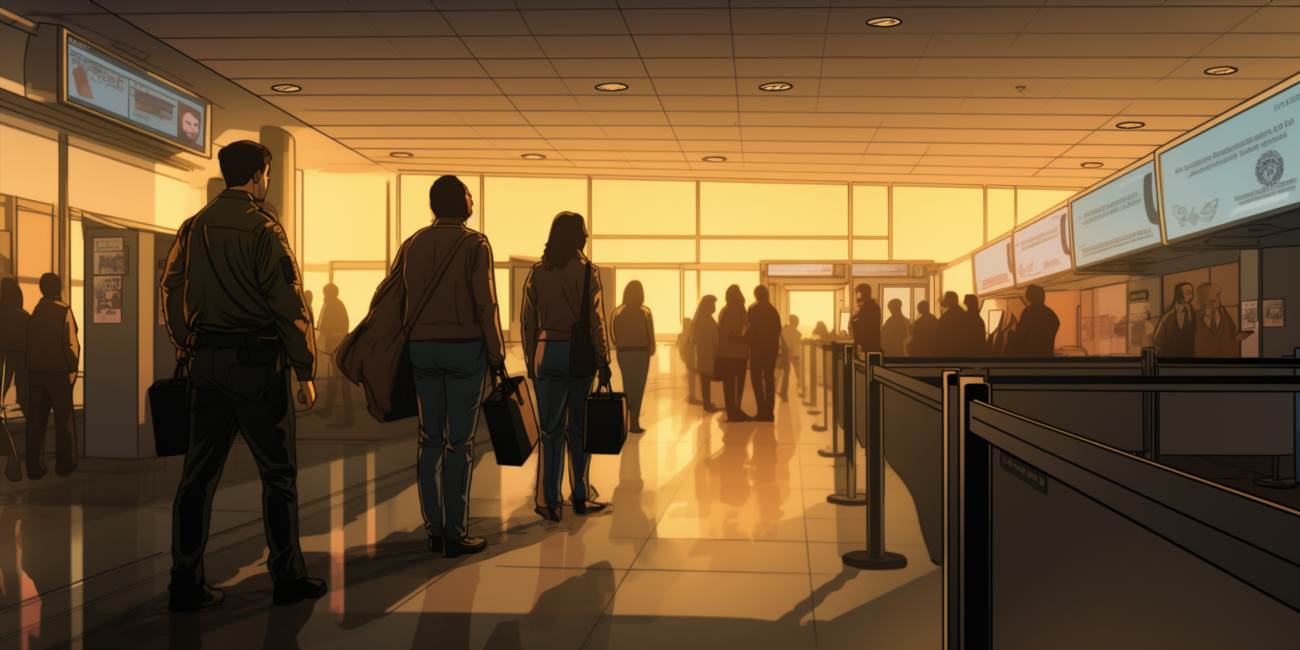While it is strongly advised to carry a valid ID when boarding a plane, some situations may arise where passengers may attempt to fly without one. This poses certain risks and challenges, as airlines and security measures prioritize passenger safety and identification.
The rules regarding boarding a plane without ID vary across different countries and airlines. In the United States, the Transportation Security Administration (TSA) has guidelines for travelers who find themselves without proper identification. In such cases, passengers may be subjected to additional screening processes to confirm their identity.
It’s crucial to note that attempting to board a plane without ID can lead to delays and missed flights. The process of confirming identity without proper documentation can be time-consuming and may involve close scrutiny. Passengers should be prepared for thorough questioning and screening procedures, which can understandably be a stressful experience.
There are instances where passengers may have lost their ID or had it stolen. In such cases, reporting the incident to the local authorities and obtaining a police report can be beneficial when explaining the situation to airport security. Some airlines may also have specific protocols for handling such scenarios, so it’s advisable to check with the airline in advance.
While the risks of attempting to board a plane without ID are evident, it’s essential to be aware of what to do in such situations. First and foremost, honesty is crucial. Informing airline staff and security about the lack of ID and providing any available supporting documents is the best approach.
Passengers may also be asked additional security questions or to provide alternative forms of identification, such as a credit card or social security card. Being cooperative and understanding during this process can facilitate a smoother resolution. However, there’s no guarantee that a passenger will be allowed to board the plane without proper ID.
Ultimately, the ability to board a plane without ID is not a straightforward affair. It involves adherence to specific rules, understanding the associated risks, and knowing the appropriate steps to take when faced with such a situation. Travelers are strongly encouraged to prioritize carrying valid identification to avoid potential complications and ensure a seamless journey.
Boarding with expired id: regulations and airline policies
When it comes to boarding a flight with an expired ID, passengers often find themselves caught in a web of regulations and airline policies that vary from carrier to carrier. It’s a situation that can cause anxiety and uncertainty, but understanding the main points can help navigate through this challenge.
First and foremost, it’s crucial to check the expiration date on your identification document before heading to the airport. Airlines strictly adhere to government regulations, and an expired ID may result in denied boarding. Some carriers might allow a grace period, but this isn’t universal.
Airlines typically follow guidelines set by aviation authorities and government agencies. The Transportation Security Administration (TSA) in the United States, for example, requires passengers to present a valid, unexpired ID for domestic travel. However, the specifics may differ in other countries.
While airlines have their own policies, they are ultimately bound by legal requirements. The International Air Transport Association (IATA) sets international standards, and airlines must comply. This means that even if a particular airline seems lenient, there are limits to how much they can deviate from these global regulations.
Some passengers may wonder if alternative forms of identification are acceptable. In many cases, the answer is yes. However, it’s essential to ensure that the alternative ID is on the list of acceptable documents outlined by both the airline and relevant authorities. This might include passports, government-issued IDs, or certain forms of identification for special cases.
When facing a situation where the ID is expired, passengers should contact the airline in advance. Many carriers have customer service teams that can provide guidance on the specific steps to take. Some may require additional documentation or verification processes, and being proactive can prevent last-minute complications.
It’s important to note that exceptions are rare, and relying on them can be risky. Airlines prioritize security and compliance, and deviations from standard procedures are typically reserved for extraordinary circumstances. Passengers should not assume that they will be granted exceptions and should always aim to comply with the established regulations.
Security screenings add another layer to this process. Even if a passenger manages to board with an expired ID, they might face additional scrutiny during security checks. This can lead to delays and potential further complications, emphasizing the importance of adhering to the rules from the outset.
Using a temporary id to board a flight: types allowed and verification process

When it comes to boarding a flight with a temporary ID, travelers must be aware of the types of temporary ID documents that are accepted and the stringent verification process in place. Not all temporary IDs are created equal, and understanding the nuances can save you from potential travel hiccups.
Firstly, it’s crucial to note that not all types of temporary ID documents are universally accepted for boarding. While some countries or airlines may allow certain forms, others may have strict criteria. Commonly accepted temporary IDs include government-issued traveling papers such as a driver’s license or a state ID card. These documents are generally recognized and can facilitate a smooth boarding process.
Before relying on a temporary ID for boarding, it’s wise to check the specific requirements of the airline and the destination country. Some may demand additional documentation, such as proof of residence or a recent photograph. This information is often available on the airline’s website or can be obtained by contacting their customer service.
The verification process for temporary ID varies, but it typically involves a thorough examination of the provided documents. Airlines and security personnel may use advanced technology to verify the authenticity of the temporary ID, including barcode scanners and facial recognition software. Ensuring that your temporary ID is in good condition and free from alterations is crucial to pass these verification checks smoothly.
One commonly accepted temporary ID for boarding is the driver’s license. This form of identification is widely recognized and often meets the necessary criteria for air travel. However, it’s essential to ensure that the driver’s license is valid and not expired, as an expired ID may lead to complications during the boarding process.
For those without a driver’s license, a state ID card is another viable option for boarding a flight. State ID cards serve as official traveling papers and are generally accepted by airlines. Similar to the driver’s license, it’s crucial to check the expiration date and ensure the document is in good condition for a seamless boarding experience.
While temporary IDs such as driver’s licenses and state ID cards are widely accepted, it’s essential to remain informed about any changes in regulations or requirements. Some destinations may have specific rules regarding the acceptance of certain temporary ID documents, and staying updated on these guidelines can prevent last-minute inconveniences at the airport.
Boarding as an unaccompanied minor without id: airport procedures
When it comes to the intricate process of minor children traveling alone, ensuring all the necessary identification papers are in order is paramount. Imagine a scenario where a young traveler finds themselves at the airport without the crucial documentations, particularly the boarding pass, creating a whirlwind of challenges.
For unaccompanied minors, the journey through airport procedures is a carefully choreographed ballet, where each step is crucial. The absence of identification papers can quickly turn this ballet into a chaotic dance. At the check-in counter, airline staff is well-versed in handling minors traveling solo. They will request the essential identification papers, including proof of age and any necessary travel authorizations.
Once the initial documentation is scrutinized and approved, the unaccompanied minor is issued a special boarding pass that reflects their status. This pass is not just a ticket onto the aircraft but also a symbol of responsibility shoulder by the airline and airport staff. It boldly declares the minor’s solo traveler status, prompting heightened attention and care from the cabin crew throughout the journey.
It’s important to note that the boarding pass is not a standalone document; it is intricately linked to the provided identification papers. The two work in harmony, ensuring a smooth transition through security checks and boarding gates. Without these vital documents, the minor’s journey can quickly come to a standstill, causing frustration and concern for both the young traveler and airport staff.
At the security checkpoint, the boarding pass and identification papers take center stage. Security personnel meticulously verify the details, ensuring the minor is indeed the person named on the documents. The boarding pass acts as a gateway, granting access to the secure areas of the airport only when accompanied by the appropriate identification papers.
Throughout this process, the airline and airport staff work in tandem to guarantee the safety and well-being of the unaccompanied minor. The journey is not just a physical one but a mental and emotional experience, and the presence of correct identification papers and a valid boarding pass is the foundation of this unique travel adventure.






